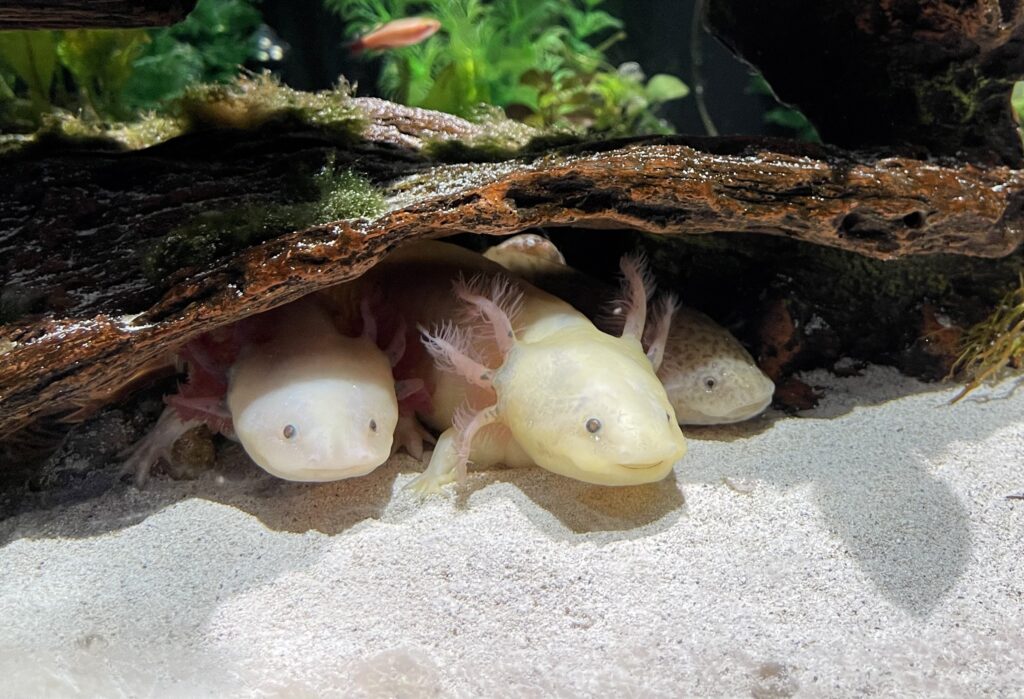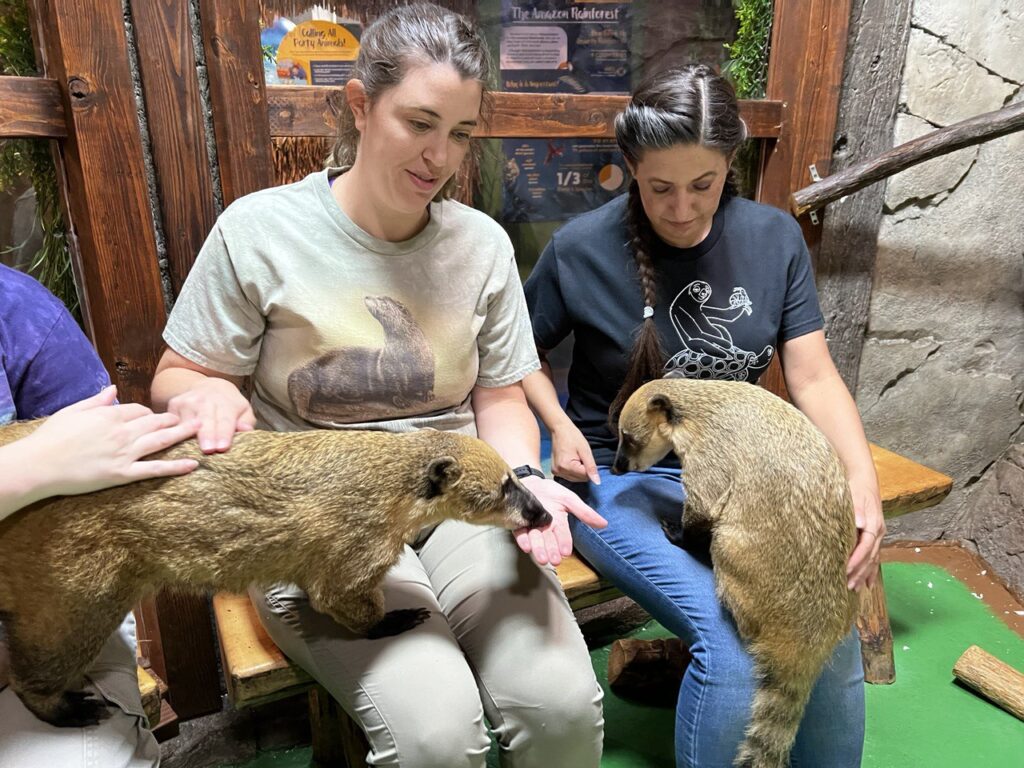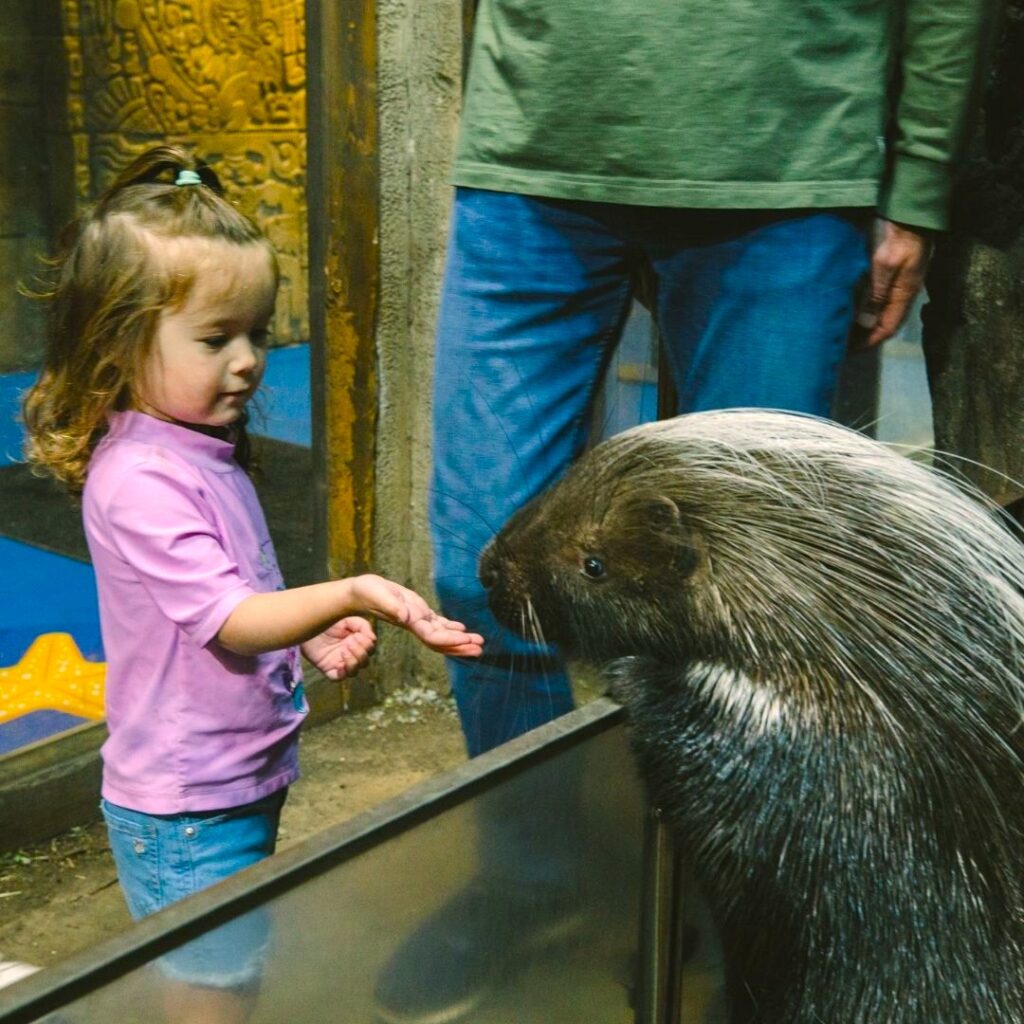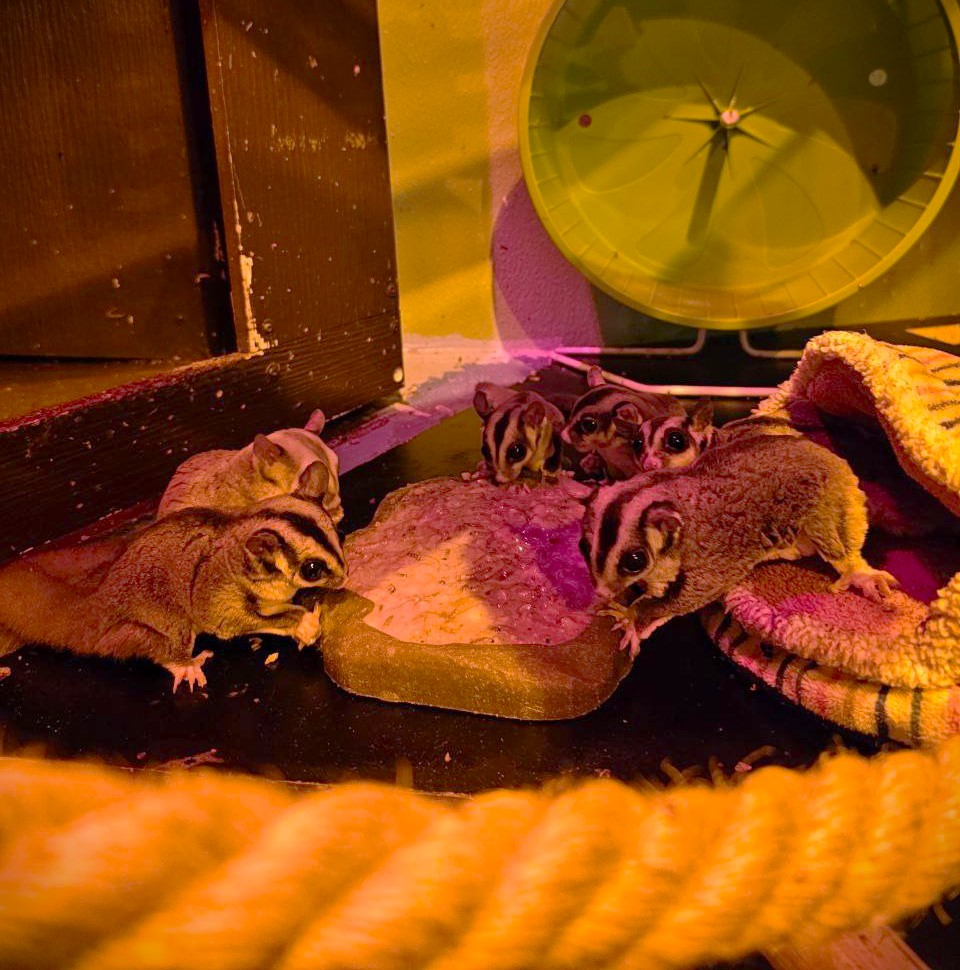SeaQuest Guide to Axolotls
Share it on:
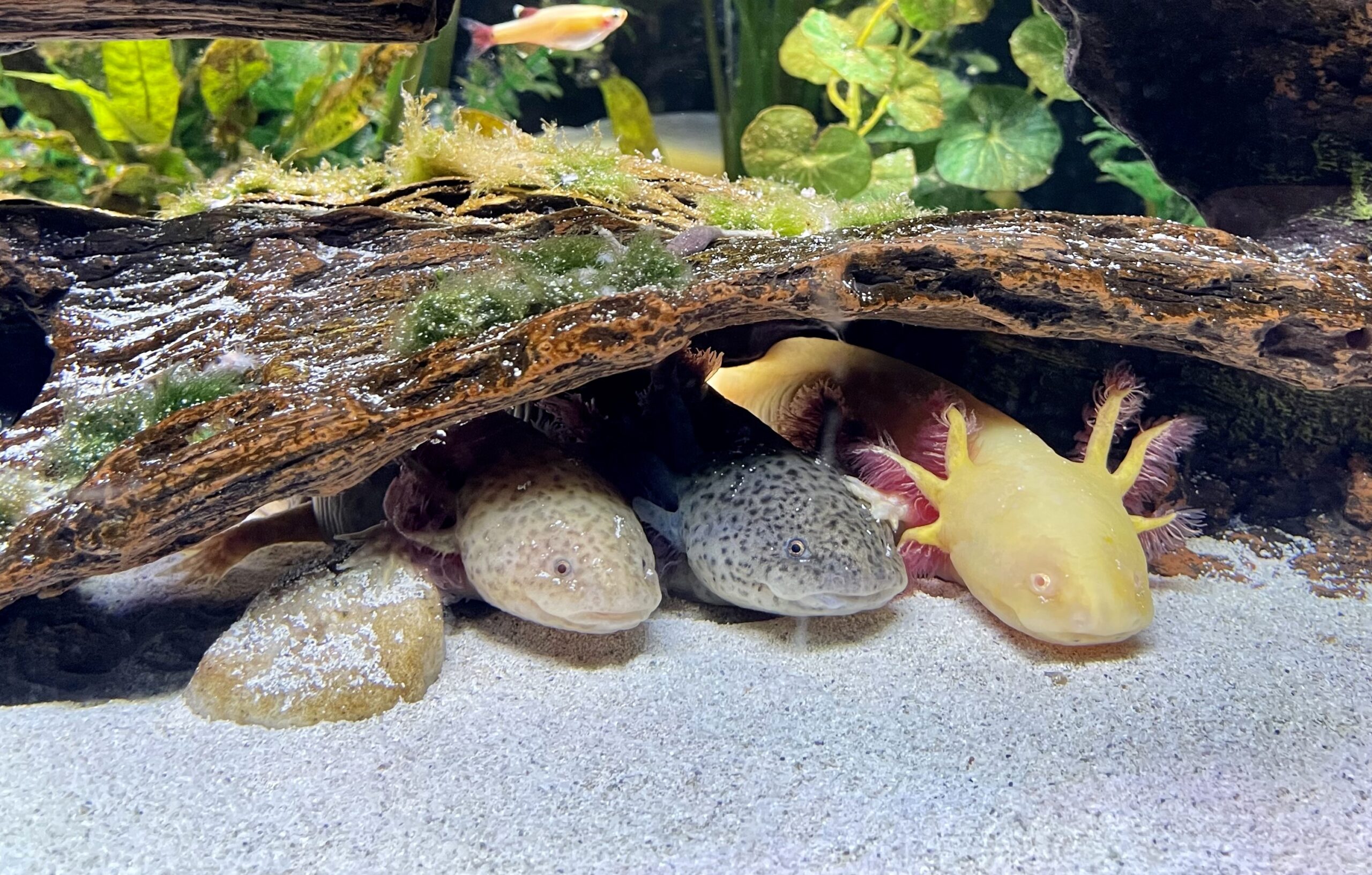
At first sight, an axolotl may seem like a little critter coming from outer space. However, these cuties are native to our home planet and originate in the wild in Mexico. In more recent years, the axolotl can be found in many homes and aquariums worldwide. With their captivating looks, it’s not hard to see why the axolotl has grown in popularity.
What is an Axolotl?
Known as the Mexican walking fish, the Axolotl isn’t a fish at all! Axolotls are actually aquatic salamanders. Most salamanders will go through an aquatic larval form before they become adults. In their larval form, they look like large tadpoles and have the fun-looking crown created by their external gills. However, unlike other salamanders, Axolotls never lose their external gills or start walking on land. Instead, they spend their entire lives underwater.
Are Axolotls Poisonous?
No, healthy Axolotls are not dangerous to humans at all! Like most marine and aquatic animals, they are only harmful if they happen to carry diseases that can affect humans. However, the body of an Axolotl does not contain any poison. Humans can touch an Axolotl anytime. There is nothing on their skin that can hurt a human. Keep in mind that before you touch an Axolotl, make sure to wash and disinfect your hands. Avoid transferring bacteria or contaminants from human skin to the Axolotl.
Where Do Axolotls Live?
In the wild, Axolotls are found in precisely one lake in the entire world: Lake Xochimilco near Mexico City, Mexico. Previously, they were also found in Lake Chalco. Unfortunately, Lake Chalco was drained in the 1980s over fears that the lake would flood. While Axolotls have become popular pets, their numbers have rapidly dropped in the wild to critically endangered levels. They were once declared extinct in the wild, though a very small population has been identified in their natural habitat in recent years.
How Long Do Axolotls Live?
Axolotls in captivity have been known to live as long as 15 years, while in the wild, they live to about five or six years old.
How Many Types of Axolotls Exist?
There are about ten known types of Axolotl:
- Leucistic
- Piebald
- Golden Albino
- Copper
- Black Melanoid
- Lavender
- Firefly
- White Albino
What Do Axolotls Eat?
In the wild, Axolotls are known to eat worms, tadpoles, insects, small fish, and crustaceans. In captivity, they can be fed earthworms, shrimp, fish pellets, and strips of beef and liver.
Can Axolotls See?
Axolotls actually have very poor eyesight. They rely on their excellent sense of smell to help them find their food. In the wild, they can be found in the dark muddy bottom of Lake Xochimilco, so they prefer habitats with less light in order to heighten their other senses. This also helps them defend against predators in the area.
Can You Have an Axolotl as a Pet?
Certainly! People love to have Axolotls as pets because of their great smiles. Providing the right size tank and proper water and temperature conditions, Axolotls will remain happy for a long time. A healthy diet and feeding care is also a necessary factor to keep them healthy. Axolotls are nocturnal animals. They remain calm during the daytime and will be more active during nighttime hours. They are easy to take care of and are affordable.
Are Axolotls Good Pets?
One reason for the explosion in popularity of having Axolotls as pets is that they’re very enjoyable to view. These amphibians tend to notice when they’re being watched, and they like to put on a show, suddenly becoming even more active for an audience. Axolotls are considered rather docile and rarely show aggression when left on their own.
The most important thing to remember is that Axolotls are more of a watch-and-observe type of pet than the type you might interact and play with. But overall, they make excellent pets! They’re fun to watch, cute as can be, and easy to care for. With long-term proper care and love, Axolotls can live in captivity as pets for a very long time.
Fun Facts About Axolotls:
SeaQuest is committed to protecting our world’s oceans, wildlife, and endangered animals. We focus on how to be proactive in finding solutions. To learn more about Axolotls and our efforts to protect their species, book your visit today at any of the following locations: Utah, Las Vegas, Dallas-Fort Worth, Sacramento, Minneapolis, Lynchburg, and New Jersey
- Axolotls can lay up to 1,100 eggs at a time!
- Axolotls can regrow their feet, legs, spinal cords, and even part of their brain!
- Sexual maturity occurs between 12-24 months.
- Young Axolotls will hatch out between 11-14 days after conception.
- In the wild, Axolotls face a variety of threats and are considered critically endangered.
- With the help of aquariums like SeaQuest, the Axolotl isn’t likely to go extinct anytime soon. With captive breeding programs, SeaQuest has been able to help conserve the species in hopes of increasing population numbers in their natural habitat!
- The Axolotl is the inspiration for many pop culture figures, including two Pokemon(™) characters: Mudkip and Wooper.
SeaQuest is committed to protecting our world’s oceans, wildlife, and endangered animals. We focus on how to be proactive in finding solutions. To learn more about Axolotls and our efforts to protect their species, book your visit today at any of the following locations: Utah, Las Vegas, Dallas-Fort Worth, Sacramento, Minneapolis, Lynchburg, and New Jersey

